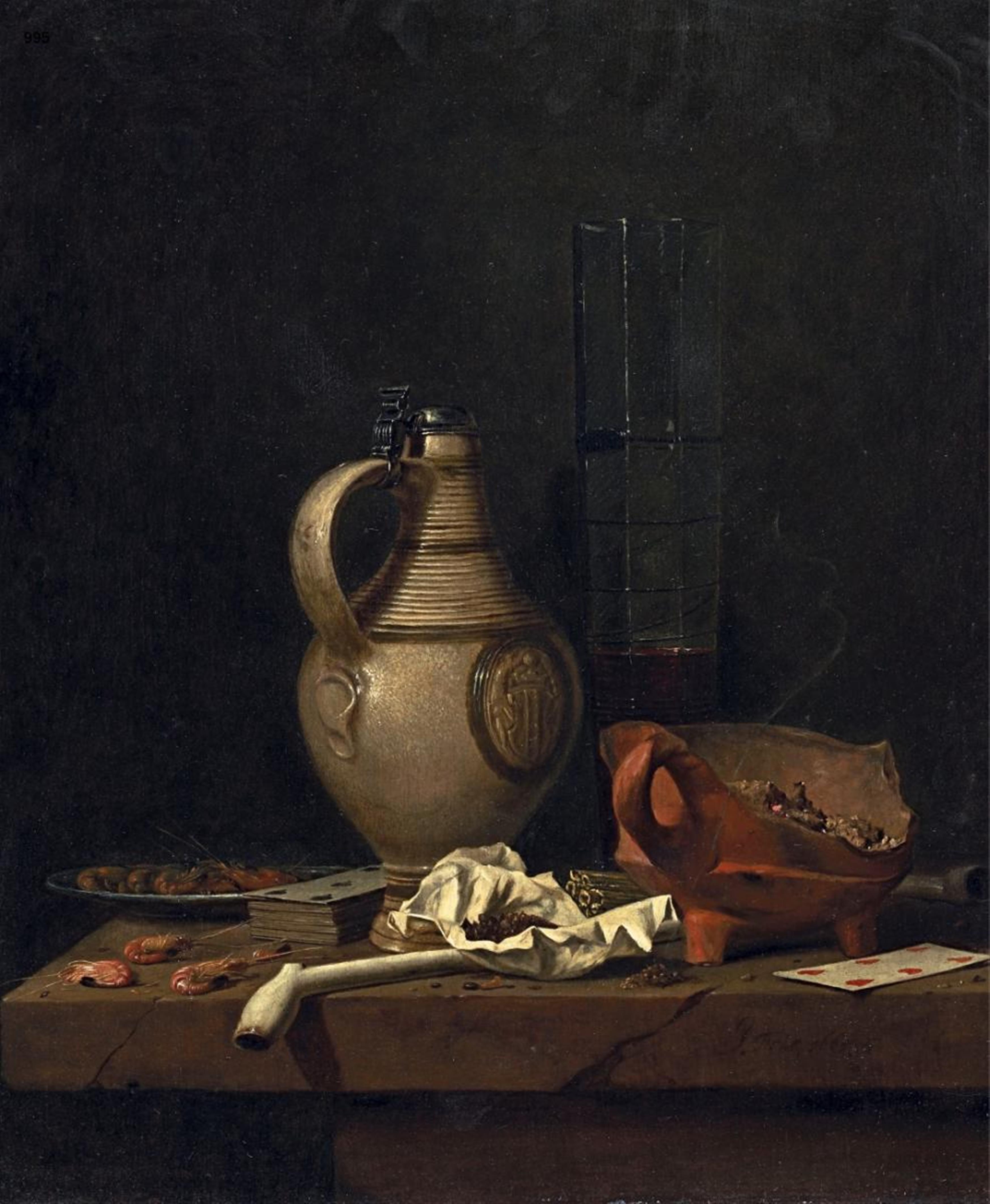Jan Fris
RAUCHERSTILLLEBEN
Öl auf Holz. 49 x 42 cm.
J. Fris 1665.
Das Gesamtwerk des Amsterdamer Malers Jan Fris ist nicht umfangreich, und so tauchen signierte und gesicherte Werke aus seiner Hand relativ selten auf. Das aus seiner Reifezeit stammende Gemälde zeigt ein sogenanntes "Toebackje", ein Tabakstillleben. Bergström ordnet dieses Bildthema zur Gattung der Vanitas-Stillleben zu, Bildern also, bei denen sich Maler und Betrachter der Vergänglichkeit alles Irdischen bewusst werden (I. Bergström: Dutch Stillife painting in the Seventeenth Century, London, New York 1956, S. 154 ff.). Vanitas-Bilder leiten den Betrachter "zur Reflexion an, zur kontemplativen Versenkung in die Irrwege der Welt, das eitle Streben nach Macht, Ruhm und Genuss und konfrontieren ihn mit der eigenen Sterblichkeit und dem Verrinnen der Zeit." (H. J. Raupp: Niederländische Malerei des 17. Jahrhunderts, Münster 2004).
Auf einer Tischplatte breitet der Maler diverse Gegenstände aus, auffallend ist dabei die zentrale Position einer weißen Tonpfeife, aus dessen Mundstück ein feiner Rauchfaden emporsteigt. Daneben verglühen Kohlestücke in einem zerbrochen Tongefäß, während dahinter ein unversehrter Raerener Krug mit dem Amsterdamer Wappenschild herausragt. Links davon liegt ein Kartenspiel, Coeur-Sechs daraus liegt vorne links. Im Verständnis des Vanitas-Bildes stehen die Karten für das Glücksspiel, mit dem man nicht nur Zeit, sondern auch Geld vergeudet.
The entire Oeuvre of the Amsterdam painter Jan Fris is not very extensive, and signed and authentic works by his hand therefore appear relatively seldom. This painting from his mature period shows a so-called "Toebackje", a still life with tobacco. Bergström classifies this theme as a Vanitas still life where painter and viewer should reflect an the passage of all worldly things (I. Bergström: Dutch Still Life Painting in the Seventeenth Century, London, New York 1956, p. 154 ff.). Vanitas paintings guide the viewer
to reflect and contemplate deeply the mazes of the world, the vain craving for power, fame and enjoyment, and confront him with his own mortality and and the vanishing of time (H.J. Raupe: Dutch Painting of the Seventeenth Century, Münster 2004).
On a tabletop the painter has distributed several objects, prominent is the central position of a white clay pipe,
its mouthpiece emitting a fine live of smoke. Next to that are extinguishing pieces of coal in a broken clay vessel, while in back an undamaged Raeren jug with the Amsterdam coat of arms stands tall. At left is a deck of cards, the six-of-hearts is at left front. Understanding the Vanitas painting, the cards represent the game that wastes not only time but also money.
Provenienz
Wohl Sammlung P. Mantz, seine Versteigerung Paris, 10.5.1895, Nr. 27 (als P. Fris). - Christie´s London, 15.4.1983, Nr. 21. - Kunsthandlung D. Koetser, Zürich 1983. - Kunsthandlung Noortman & Brod, London/Maastricht, 1984. - Deutsche Privatsammlung.

